 Esperanto
Esperanto
 Shqiptare
Shqiptare
 Euskara
Euskara
 Zulu
Zulu
 Latinus
Latinus
 Cymraeg
Cymraeg
 தமிழ்
தமிழ்
 Slovak
Slovak
 Slovak
Slovak
 Afrikaans
Afrikaans
News Center
The difference between RS232 and CAN The advantages and disadvantages of RS232
Publish:
2022-07-24 23:15
Source:
www.premier-cable.net
The difference between RS232 and CAN The advantages and disadvantages of RS232
First, the difference between RS232 and CAN
1. Different definitions :
RS232: One of the communication interfaces on the personal computer with the RS232 interface, an asynchronous transmission standard interface formulated by the Electronic Industries Association (EIA).
Usually the RS-232 interface appears in the form of 9 pins (DB-9) or 25 pins (DB-25). Generally, there are two sets of RS-232 interfaces on a personal computer, called COM1 and COM2 respectively
CAN: CAN is the abbreviation of Controller Area Network (CAN), which was developed by the German BOSCH company, which is known for the research and development and production of automotive electronic products, and eventually became an international standard (ISO11898).
It is one of the most widely used fieldbuses in the world. In North America and Western Europe, the CAN bus protocol has become the standard bus for automotive computer control systems and embedded industrial control local area networks, and has the J1939 protocol specially designed for large trucks and heavy industrial machinery vehicles with CAN as the underlying protocol.
Second, the advantages and disadvantages of RS232
Advantages of RS232 :
1. Interface signal: The functional characteristics of RS-232C define 20 signal lines in the 25-core standard connector, including 2 ground lines, 4 data lines, 11 control lines, 3 timing signal lines, and the rest 5 wires are spare or undefined.
2. Mechanical characteristics: Since RS-232C does not define the physical characteristics of the connector, there are various types of connectors such as DB-25, DB-15 and DB-9, and their pin definitions are also different.
Disadvantages of RS232 :
1. The signal level of the interface is high, which is easy to damage the chip of the interface circuit, and because it is incompatible with the TTL level, a level conversion circuit is required to connect with the TTL circuit.
2. The transmission rate is low. In asynchronous transmission, the baud rate is 20Kbps; therefore, in the CPLD development board, the baud rate of the integrated program can only be 19200, which is also the reason.
3. The interface uses a signal line and a signal return line to form a common ground transmission form. This common ground transmission is prone to common mode interference, so the anti-noise interference is weak.
4. The transmission distance is limited. The standard maximum transmission distance is 50 feet, but in fact, it can only be used in about 15 meters.
Premier Cable CO LTD is a cable factory with 400 workers, we also make USB serial cable , USB to RS232 RS485 cable, OEM Cable and Wire Harness
For different application, we also make the DB9 connector and RS232 Cable angled, like right angle RS232 Cable, left angle RS232 Cable, up angle RS232 Cable, down angle RS232 Cable
Welcome to your inquiry or visit our Website : www.premier-cable.net
Our cables can be used for below industry or applications :
OBD CAN Bus analyzer
RS232 to CAN converter
USB to CAN bus analyzer
USB to CAN bus converter
PEAK-System CAN interface
PEAK PCAN-USB IPEH-002022
RS-232/422/485 Data Gateway
USB CAN and CAN FD interface
USB Diagnostic Interface CANBUS
Tel : 0086-0139-2949-7934
Skype : james198585
Email : James@premier-cable.net
Email : sales@premier-cable-mfg.com
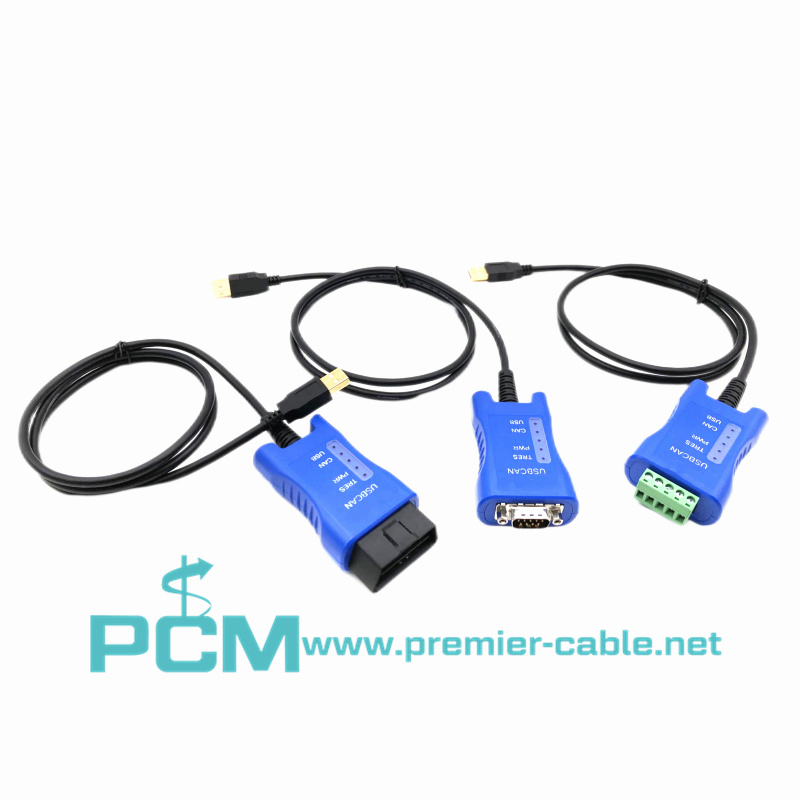
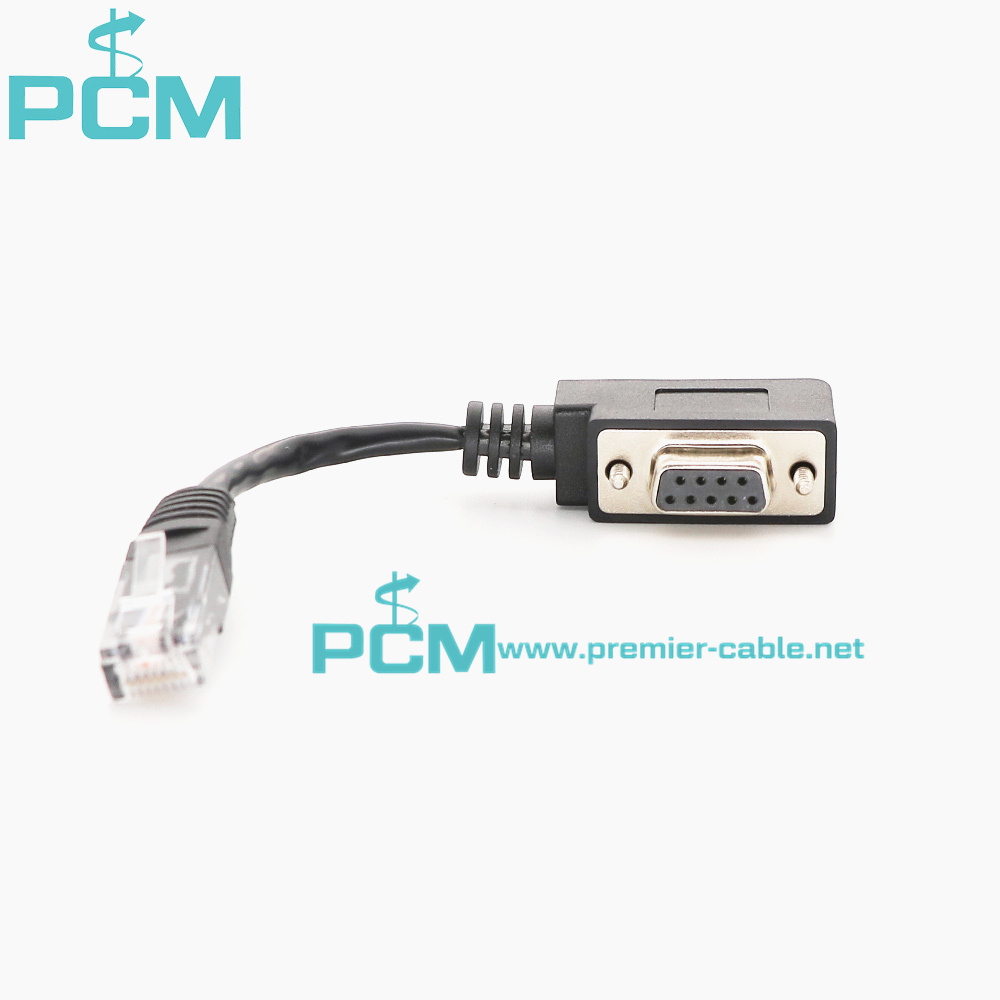
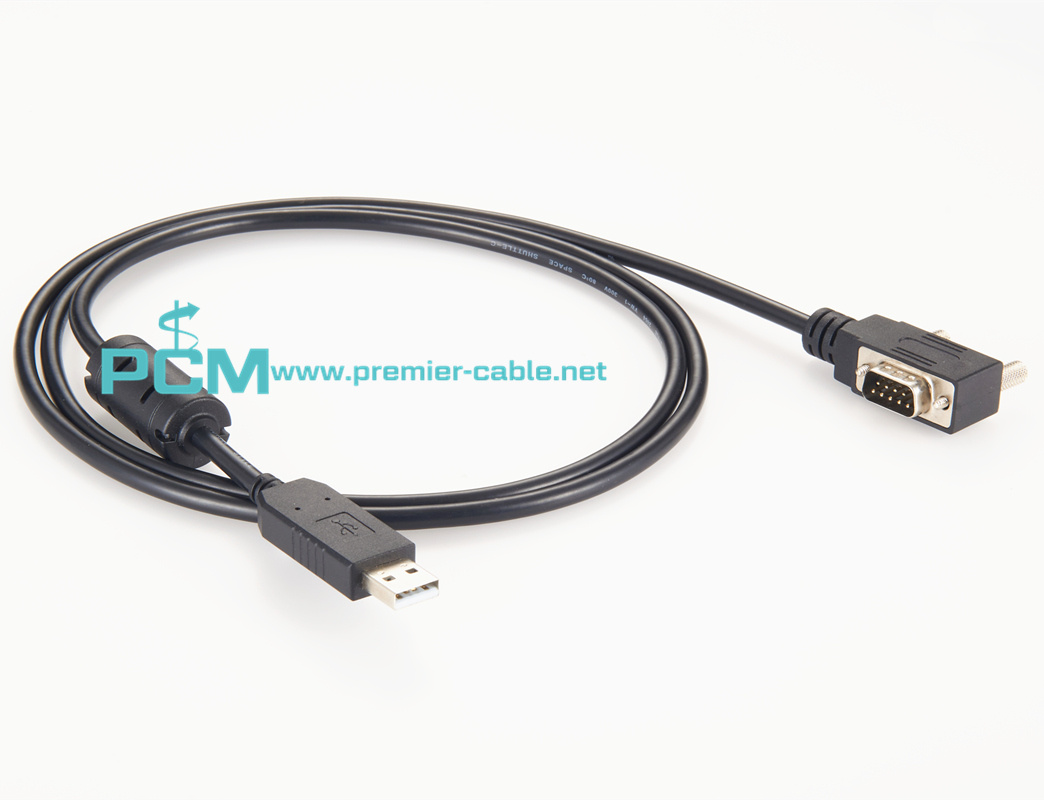
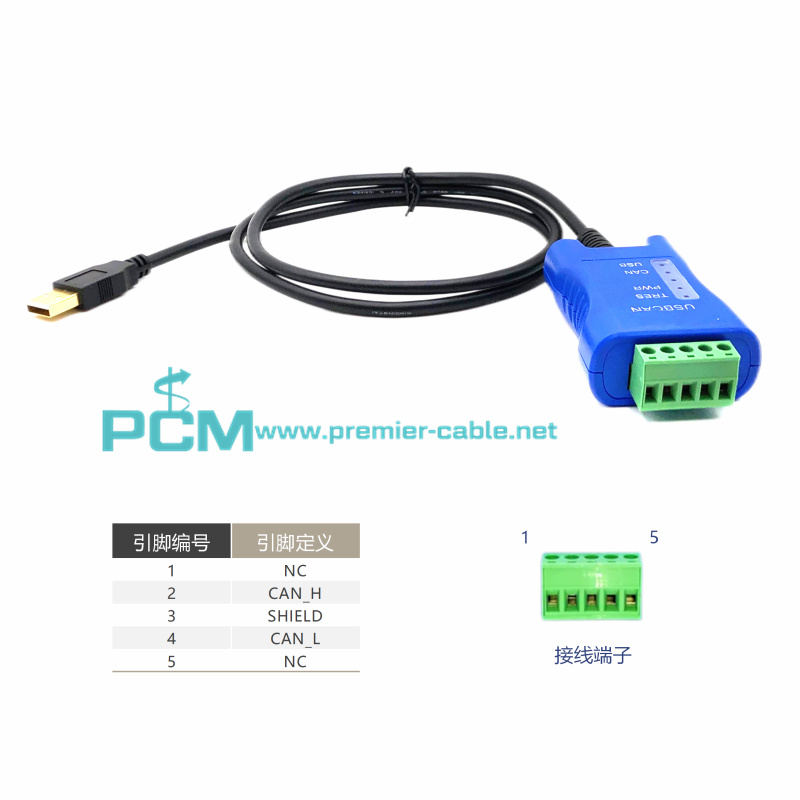
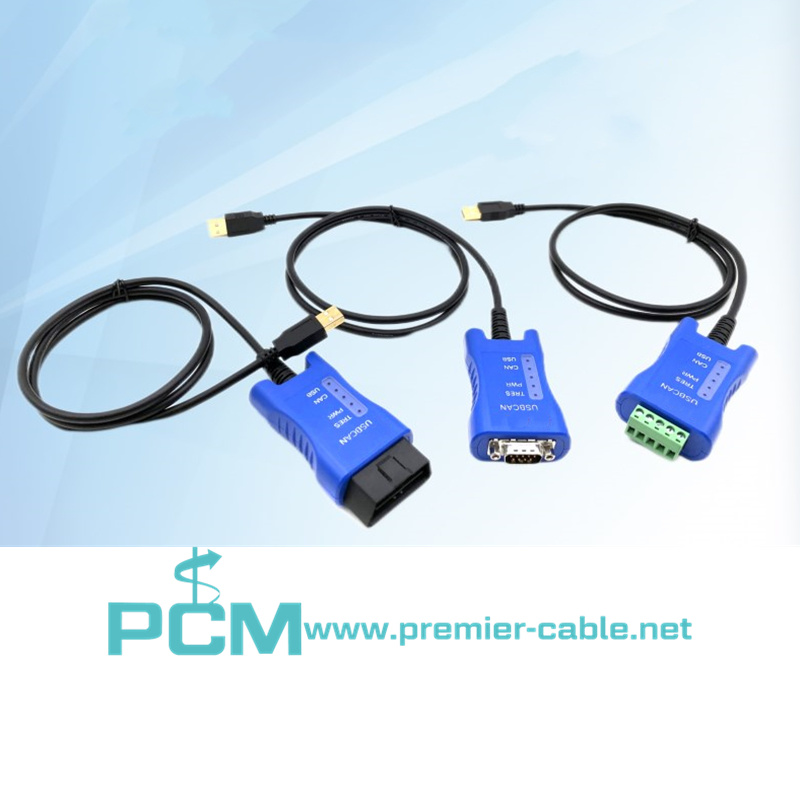
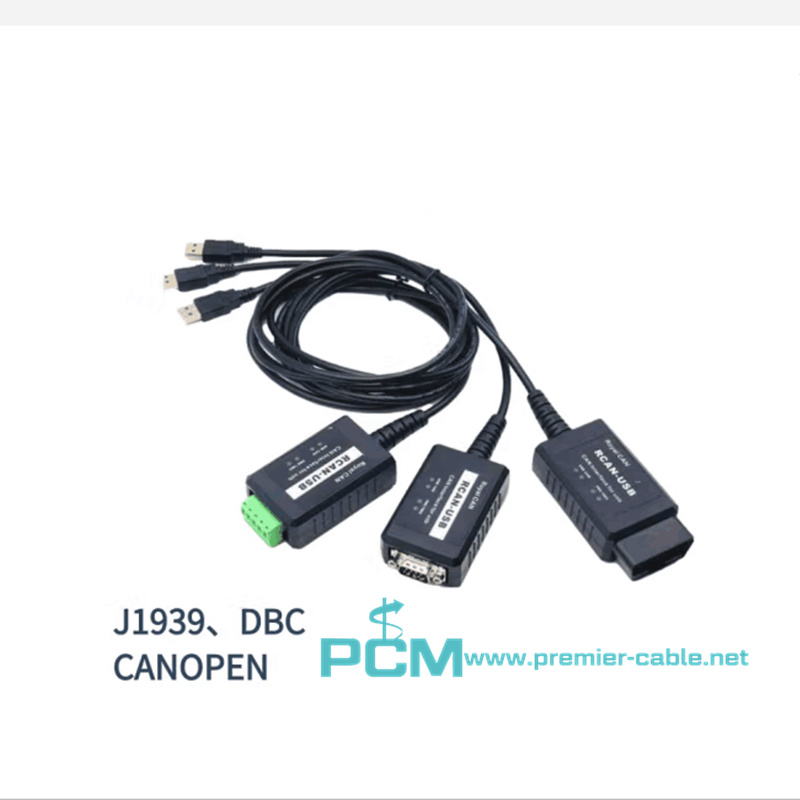
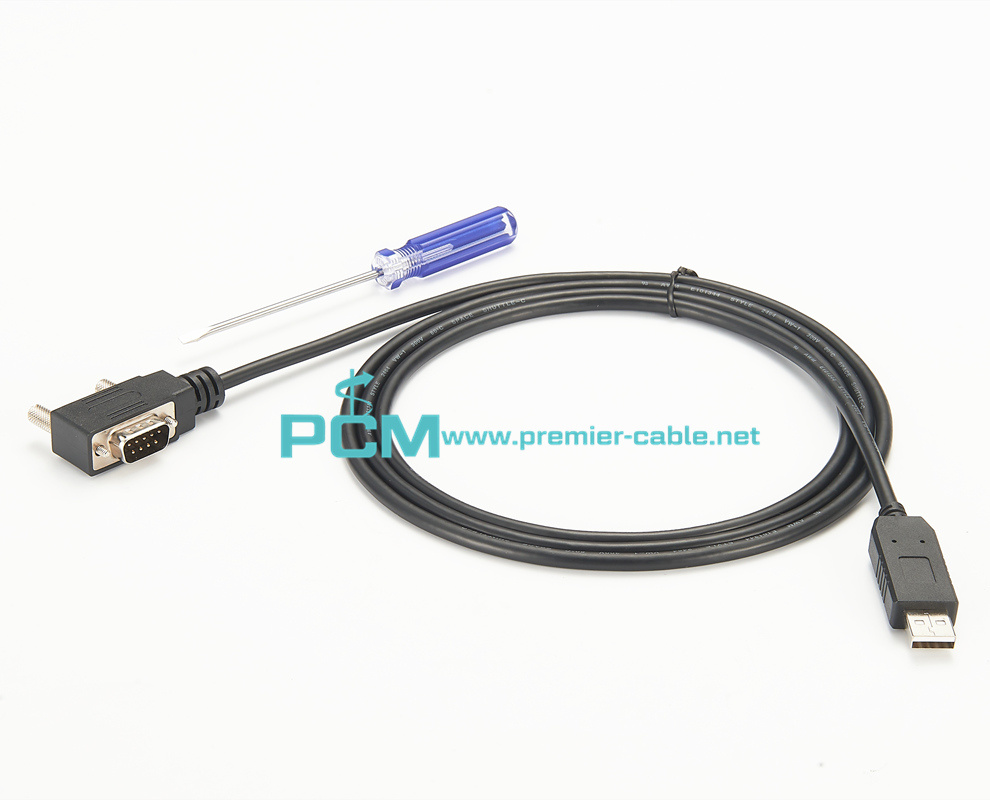
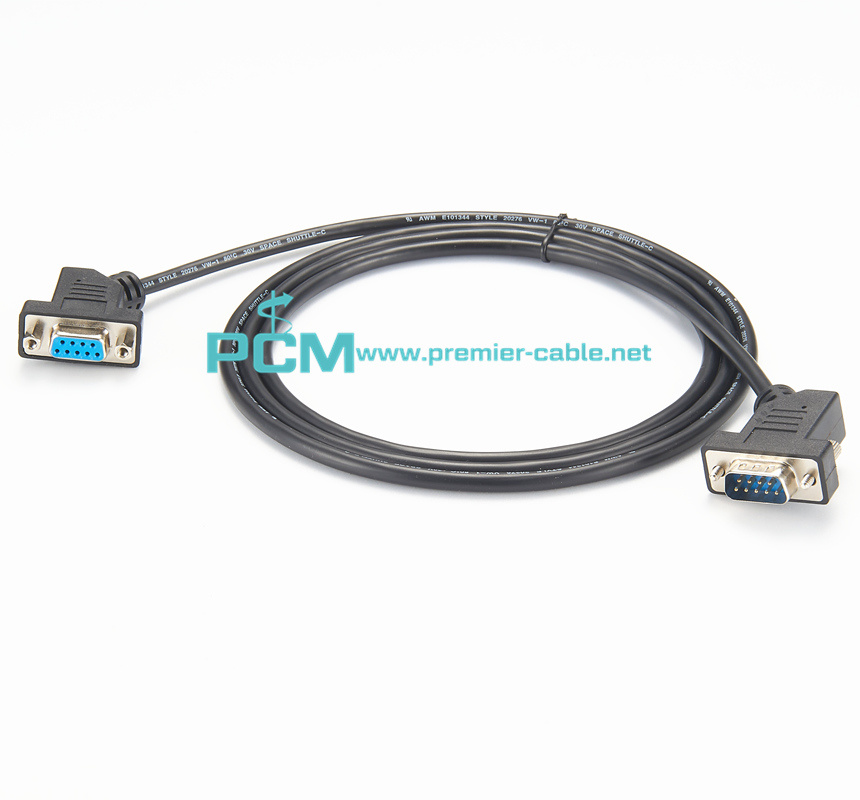
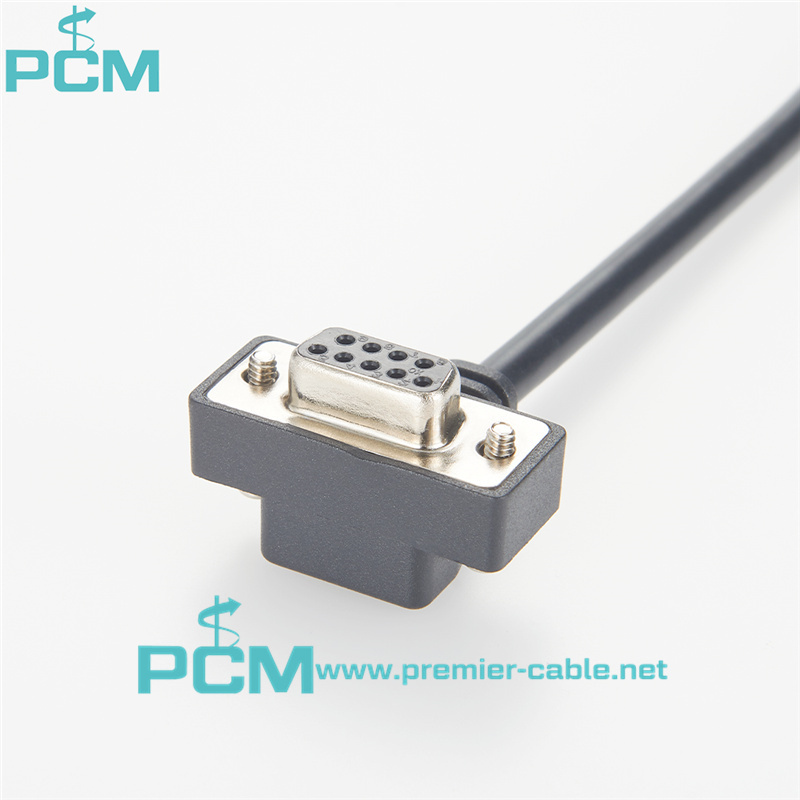
Related News
What is a terminal block used for?
While there are many factors to consider when designing an overall system, terminal blocks are an optimal solution for complex electrical system connections. With a variety of color options and configurations, Premier Cable’ terminal blocks offer a range of options to meet your design challenges.
CAN-bus has been widely used in various automation control systems. For example, CAN-bus has incomparable advantages in various fields such as automotive electronics, automatic control, smart buildings, power systems, and security monitoring.
Introduction to M12 connector pin coding
M12 encoding types are A encoding, B encoding, D encoding and X encoding. A-code, B-code and X-code are some of the earliest developed and longest-available M12 connectors. The latest M12 coding types currently under development are K coding for AC and L coding for PROFINET DC.
Cables – What are the correct cable sizes for an NMEA 2000 network?
The three different sizes of NMEA 2000 certified DeviceNet standard cabling are "micro," "mid," and "mini."
What are the advantages of NMEA 2000?
The Premier Cable Starter Kits provide everything you need to get to create a basic NMEA 2000 network from scratch.
The role of DeviceNet terminal resistor
DeviceNet_network is a fieldbus network protocol based on Controller Area Network (CAN). In the DeviceNet network, the terminal resistor plays the role of compensation and protection for signal transmission. The function of the terminal resistor is to eliminate signal reflection and interference and ensure the signal transmission quality.
